Here’s what earthquake magnitudes mean—and why an 8 can be so much scarier than a 6

The moment magnitude scale measures the movement of rock along the fault. (Sept. 22, 2017)
We know an earthquake is severe when it has a high magnitude number. The 1985 quake that devastated Mexico City was an 8. The quake that shook central Mexico this week was a 7.1.
But what exactly is magnitude?
Basically, magnitude is a number representing the total energy released in an earthquake, said seismologist Lucy Jones. The energy released is determined by how much rock moves and how far it moves.
Here’s an explainer for what magnitudes mean, and how that relates to the shaking we feel. This explains why an 8 could be so much more terrifying than a 6.
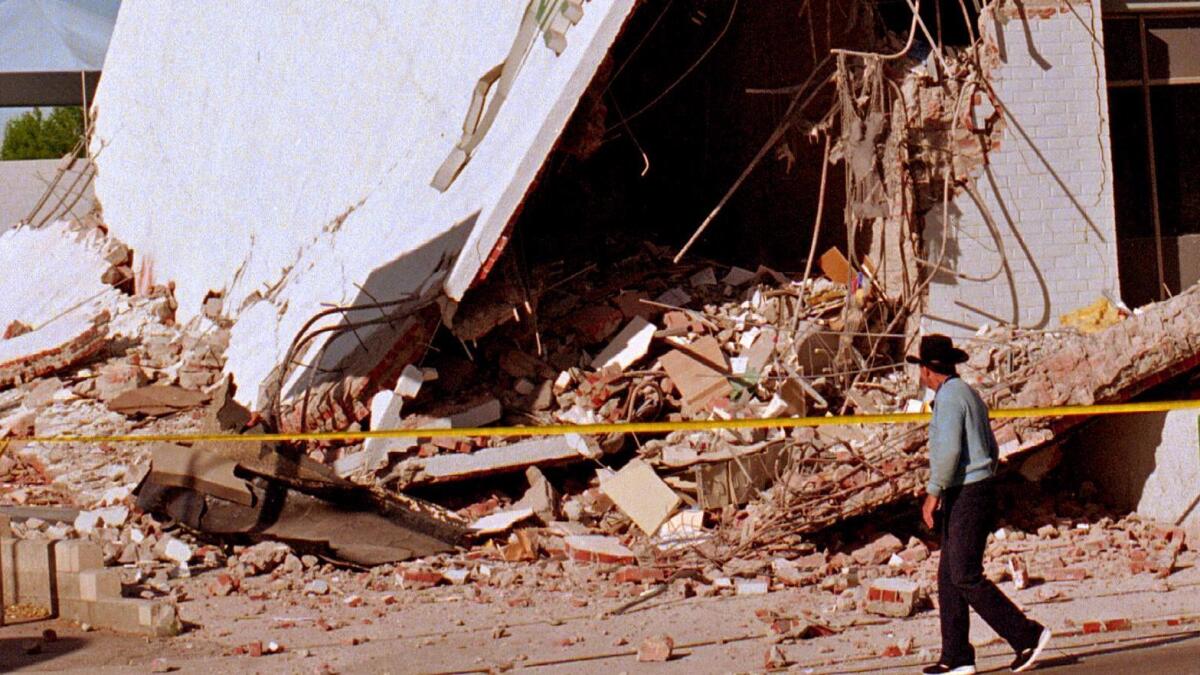
How does magnitude relate to how much energy was produced in an earthquake?
For each whole-number increase in magnitude, the seismic energy released increases by about 32 times. That means a magnitude 7 earthquake produces 32 times more energy — or is 32 times stronger — than a magnitude 6.
A magnitude 8 releases 1,000 times more energy than a magnitude 6, but it releases that energy over a larger area and for a longer time, Jones said.
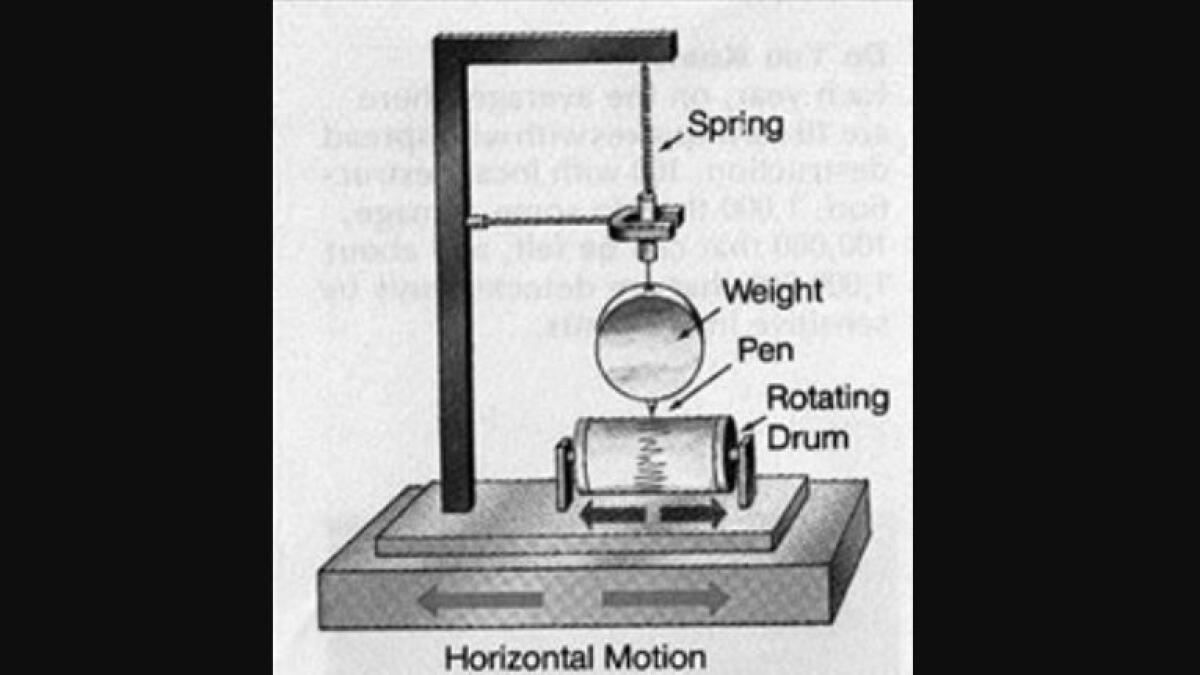
Originally, the definition of magnitude related to seismograms, in which machines used an ink stylus to record rapid motions on a rolling drum of paper that would measure shaking. Magnitude was about how big the waves were on a seismogram at a particular distance from the epicenter. On the so-called Richter scale, a magnitude 8 on a seismogram was 10 times bigger than a magnitude 7.
But the Richter scale was eventually scrapped in favor of what is known as the moment magnitude scale. The moment magnitude scale measures the movement of rock along the fault, and accurately measures larger earthquakes, which can last for minutes and affect a much larger area; the Richter scale did not accurately record such quakes, Jones said.
The U.S. Geological Survey has a calculator that can help you make these calculations. So, for instance, a magnitude 8.2 — probably the strongest earthquake that could hit Southern California on the San Andreas fault — would produce an astonishing 178 times more energy than the magnitude 6.7 Northridge earthquake in 1994.
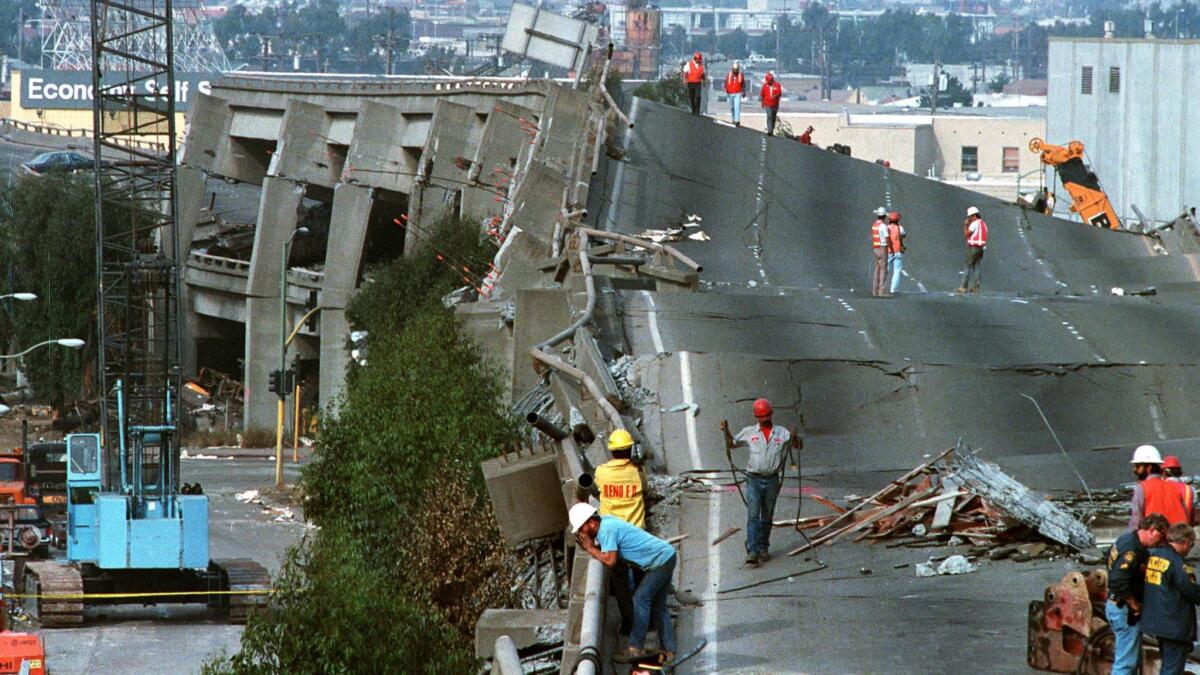
What are the earthquake magnitudes to worry about?
Magnitude is important, but a key factor is where a quake strikes. The ones most people care about strike under or near heavily populated areas.
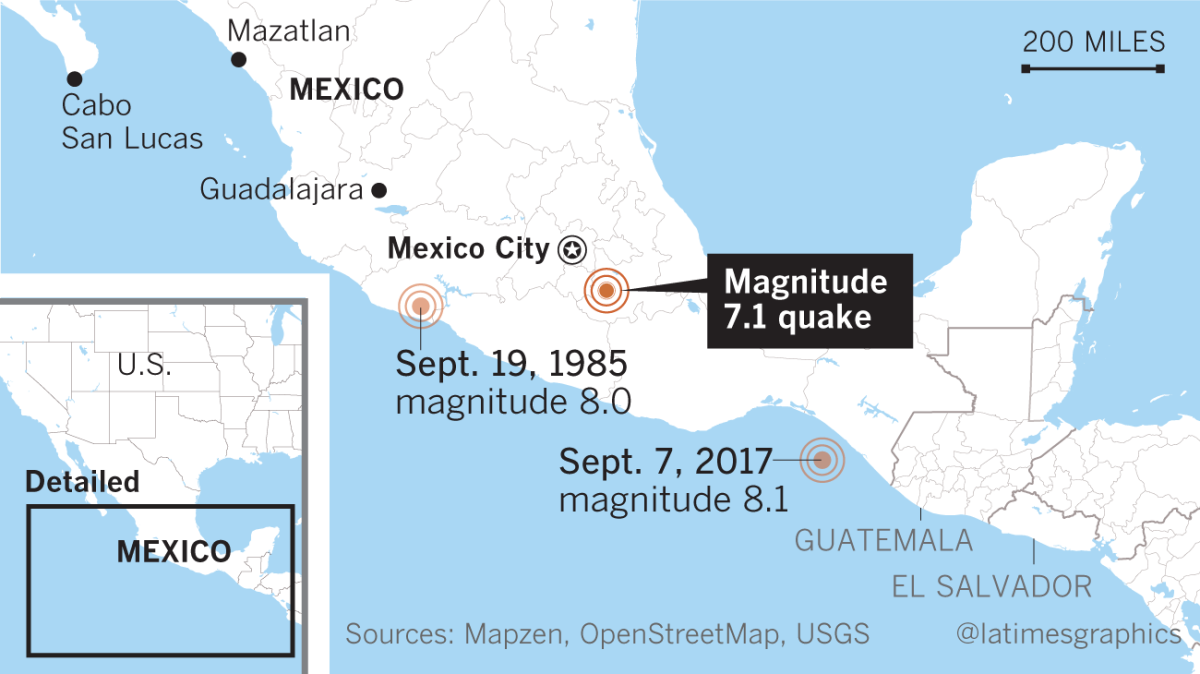
Generally, earthquakes of magnitude 6 and above are the ones for concern. When nearby, they can cause shaking intensities that can begin to break chimneys and cause considerable damage to the most seismically vulnerable structures, such as non-retrofitted brick buildings.
Earthquakes of magnitude 7 and above can overturn heavy furniture and inflict considerable damage in ordinary buildings.
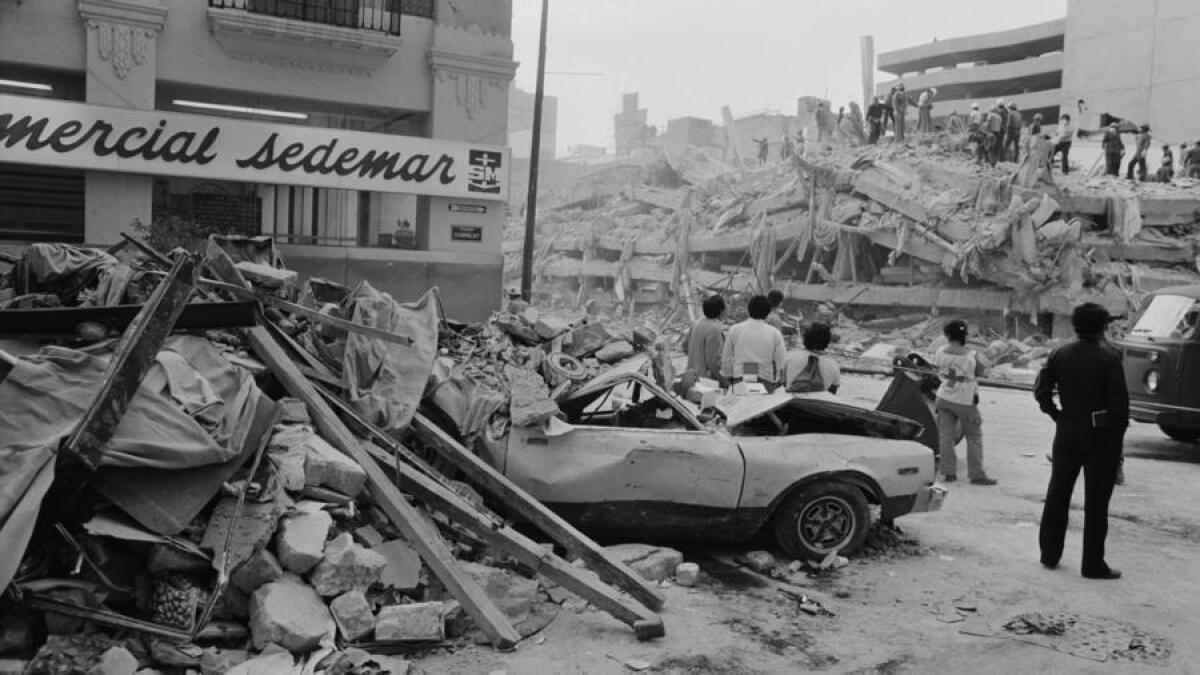
OK, so I understand that magnitudes 6s, 7s and 8s can be bad. What does that mean in terms of how bad the shaking will be where I’m located?
Let’s consider the 1994 Northridge earthquake.
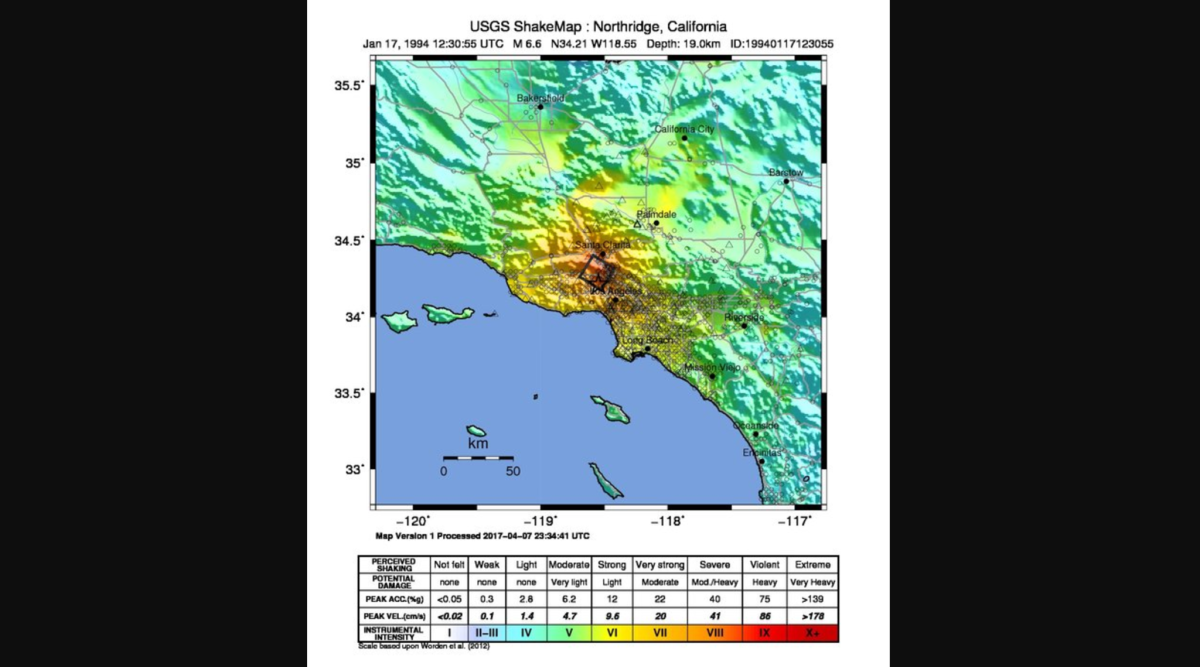
That earthquake was a magnitude 6.7. But the shaking intensity varied by where you were when it hit.
If you were in Northridge, right on top of where the earthquake fault moved, you faced what’s known as intensity 9 shaking, defined by the Modified Mercalli Intensity scale as “violent” — enough to shift a structure off its foundation.
Yet the downtown Los Angeles region got far less intense shaking from the same earthquake — intensity 6 or 7, where damage is negligible in buildings of good design and construction.
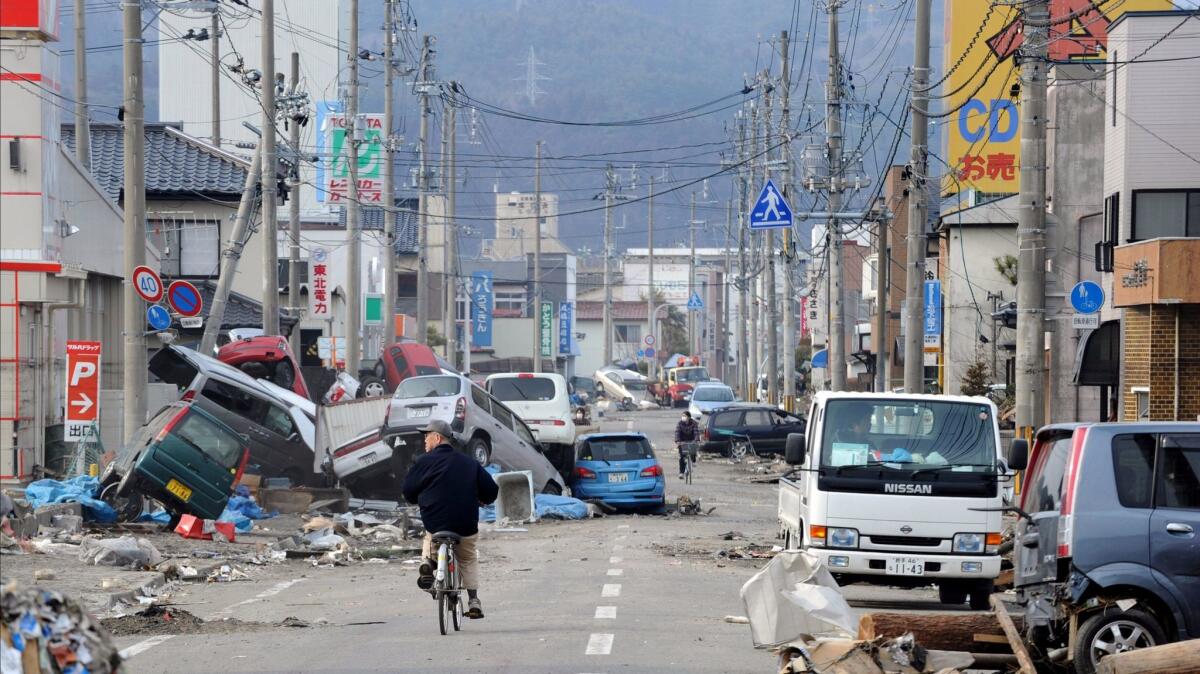
Let’s say a magnitude 7.8 earthquake strikes the San Andreas fault in Southern California. What intensity shaking would Southern California feel?
Vast swaths of Southern California would feel intensity 10 shaking, or extreme shaking — an earthquake that no one alive today has experienced in this region.
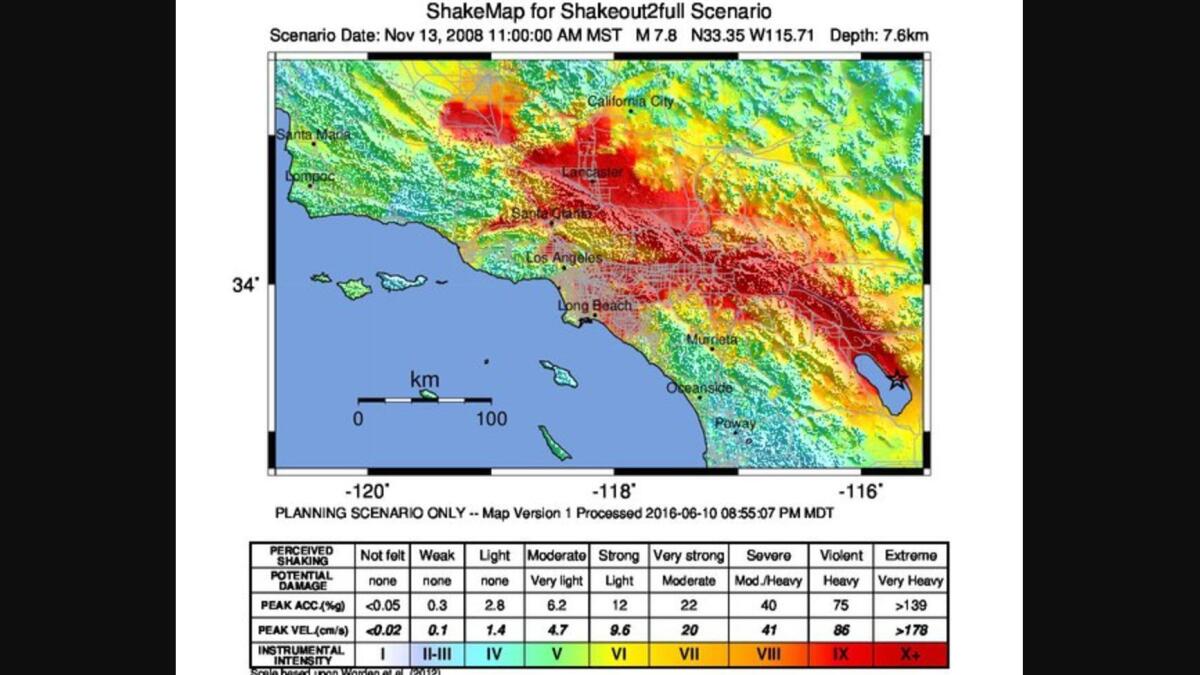
I’ve never heard of this intensity scale. Can you describe it more?
Yes. Here’s the USGS’ explanation:
Intensity 10: Extreme — Some well-built wooden structures destroyed; most masonry and frame structures destroyed with foundations. Rails bent.
Intensity 9: Violent — Damage considerable in specially designed structures; well-designed frame structures thrown out of plumb. Damage great in substantial buildings, with partial collapse. Buildings shifted off foundations.
Intensity 8: Severe — Damage slight in specially designed structures; considerable damage in ordinary substantial buildings with partial collapse. Damage great in poorly built structures. Fall of chimneys, factory stacks, columns, monuments, walls. Heavy furniture overturned.
Intensity 7: Very strong — Damage negligible in buildings of good design and construction; slight to moderate in well-built ordinary structures; considerable damage in poorly built or badly designed structures; some chimneys broken.
Intensity 6: Strong — Felt by all, many frightened. Some heavy furniture moved; a few instances of fallen plaster. Damage slight.
Intensity 5: Moderate — Felt by nearly everyone; many awakened. Some dishes, windows broken. Unstable objects overturned. Pendulum clocks may stop.
Intensity 4: Light — Felt indoors by many, outdoors by few during the day. At night, some awakened. Dishes, windows, doors disturbed; walls make cracking sound. Sensation like heavy truck striking building. Standing motor cars rocked noticeably.
Intensity 3: Weak — Felt quite noticeably by persons indoors, especially on upper floors of buildings. Many people do not recognize it as an earthquake. Standing motor cars may rock slightly. Vibrations similar to the passing of a truck. Duration estimated.
Intensity 2: Weak — Felt only by a few persons at rest, especially on upper floors of buildings.
Intensity 1: Not felt — Not felt except by a very few under especially favorable conditions.
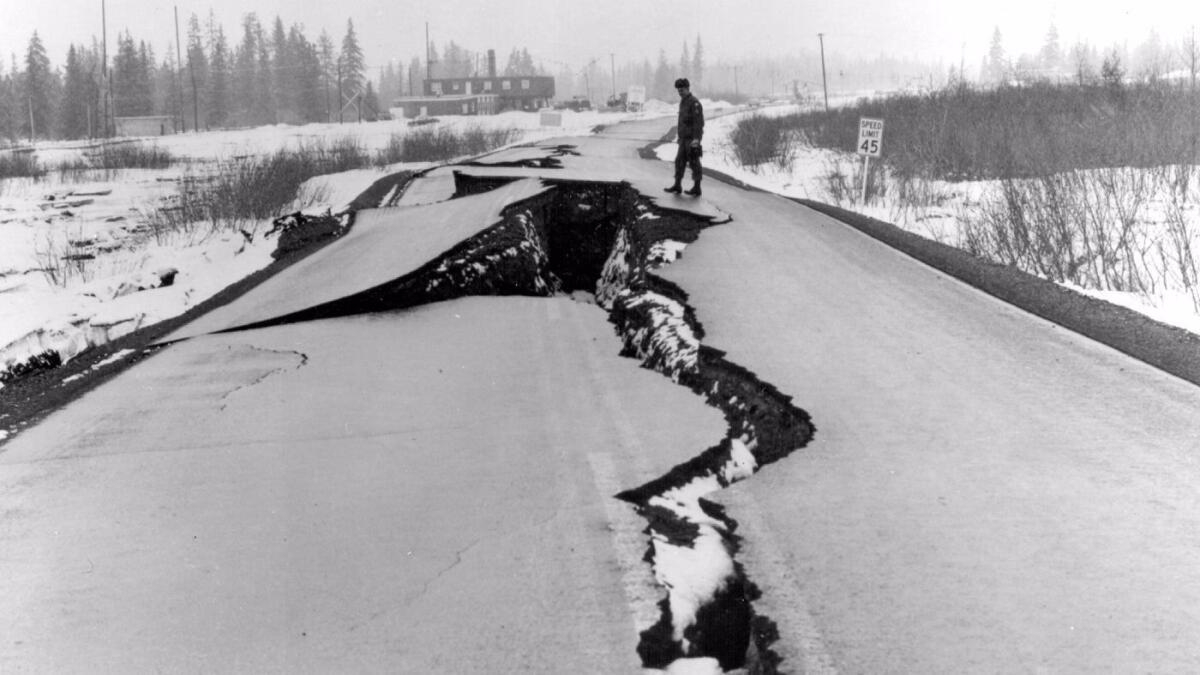
Remember when people used to say ‘Richter scale’ when describing magnitude? What happened to the Richter scale?
The USGS switched its definition of magnitude from the Richter scale to the moment magnitude scale in the late 1990s, Jones said.
The Richter scale, developed in the 1930s, was named after American seismologist and physicist Charles Richter.
Twitter: @ronlin
ALSO
Could your building collapse in a major earthquake? Look up your address on these databases
Why some buildings crumbled and others survived the Mexico City quake: A sober lesson for California
Fearing a big earthquake like the one in Mexico isn't enough. Here's how to turn anxiety into action
Sign up for Essential California
The most important California stories and recommendations in your inbox every morning.
You may occasionally receive promotional content from the Los Angeles Times.








